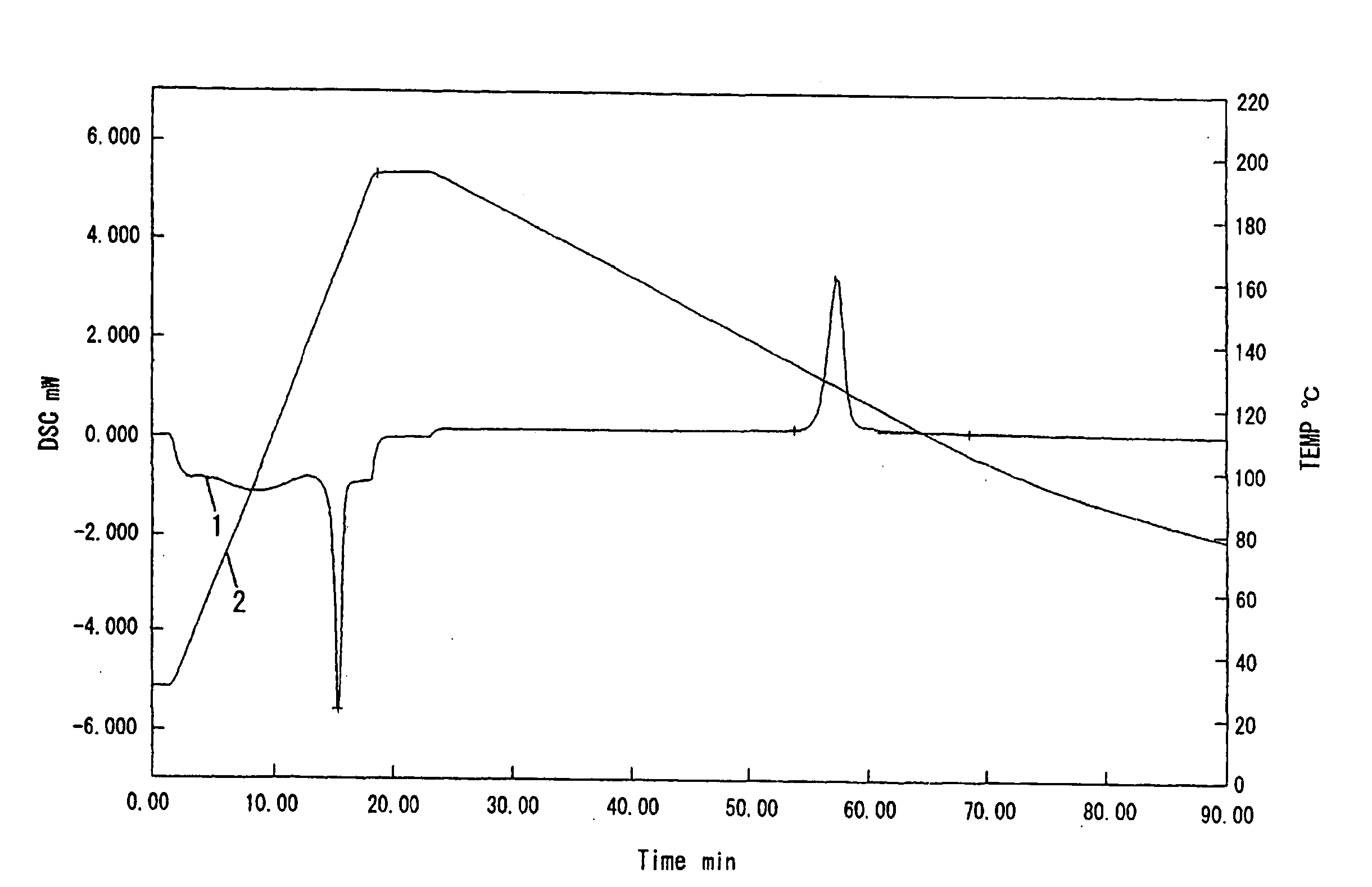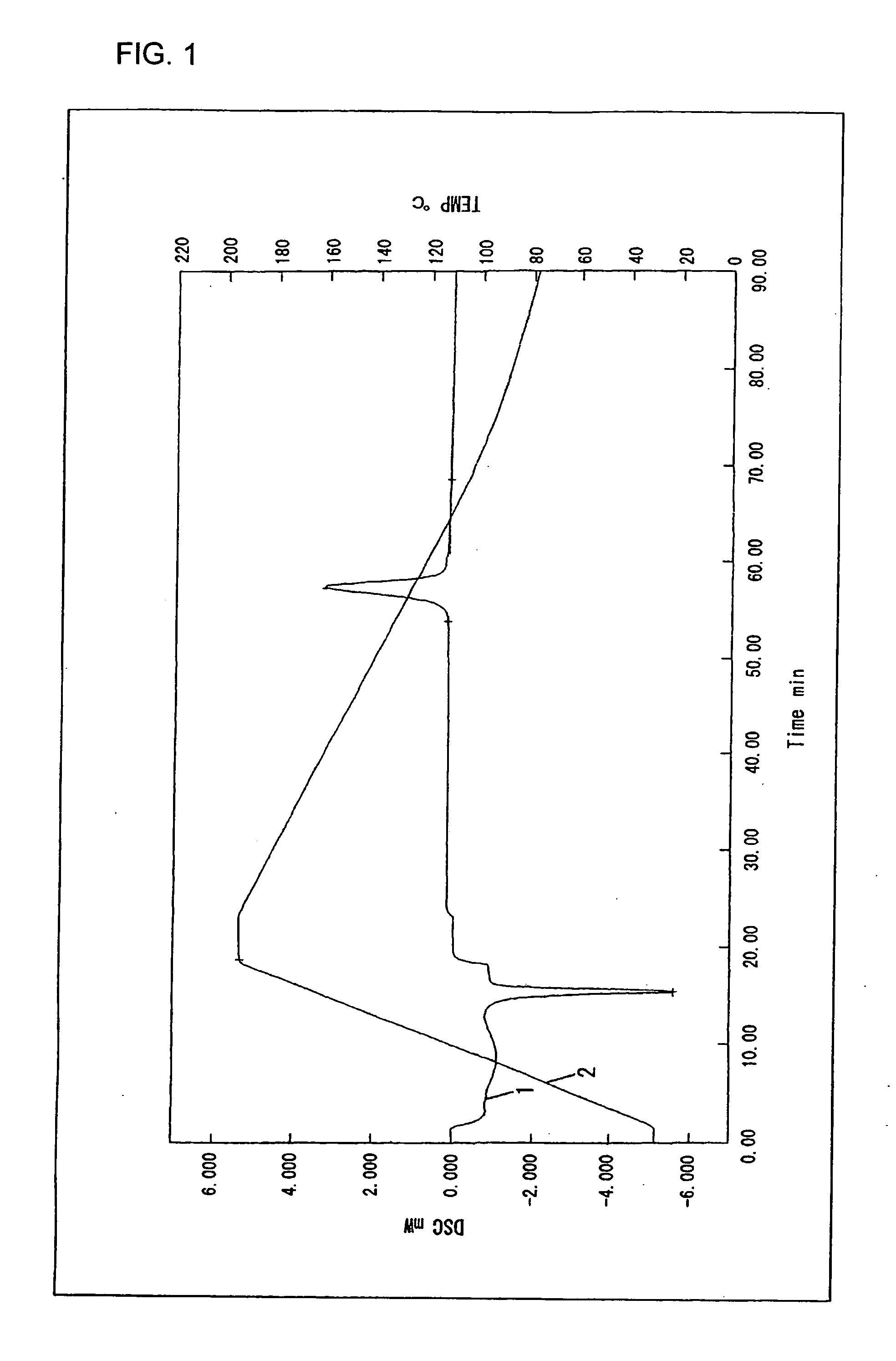Polyactic Acid Resin Composition
a technology of polylactic acid and resin, applied in the field of polylactic acid resin composition, can solve the problems of molded products liable to have a low degree of crystallinity, and achieve the effects of improving the crystallization rate of polylactic acid resin, excellent heat resistance and forming processability
- Summary
- Abstract
- Description
- Claims
- Application Information
AI Technical Summary
Benefits of technology
Problems solved by technology
Method used
Image
Examples
synthetic example 1
Synthesis of magnesium phenylphosphonate
[0035] 1.58 g (10.0 mmol) of phenylphosphonic acid (manufactured by Nissan Chemical industries, Ltd.), 0.583 g (10.0 mmol) of magnesium hydroxide and 41 g of water were mixed, stirred at 80° C. for 3 hours, then water was distilled off under reduced pressure and dried at 200° C. to obtain 1.78 g (yield 99%) of the aimed product as white crystal. Decomposition temperature: 524° C.
synthetic example 2
Synthesis of Sodium phenylphosphonate
[0036] In 1.58 g (10.0 mmol) of phenylphosphonic acid (manufactured by Nissan Chemical industries, Ltd.), 20 mL (10.0 mmol) of 0.5 N sodium hydroxide was added, stirred at room temperature for 10 minutes, then water was distilled off under reduced pressure and dried to obtain 1.78 g (yield 99%) of the aimed product as white crystal. Decomposition temperature: 480° C.
synthetic example 3
Synthesis of zinc phenylphosphonate
[0037] 1.58 g (10.0 mmol) of phenylphosphonic acid (manufactured by Nissan Chemical industries, Ltd.), 2.20 g (10.0 mmol) of zinc acetate dihydrate and 72 g of water were mixed, stirred at 80° C. for 3 hours, then the resulting slurry was filtered, acetic acid in the wet cake was fully washed away with water, and thereafter, dried at 150° C. to obtain 2.17 g (yield 98%) of the aimed product as white crystal. Decomposition temperature: 541° C. The average particle diameter was 4.4 μm with a laser diffraction type particle size distribution meter (manufactured by Seishin Enterprise Co., Ltd., PRO-7000S).
PUM
| Property | Measurement | Unit |
|---|---|---|
| particle diameter | aaaaa | aaaaa |
| melting point | aaaaa | aaaaa |
| glass transition temperature | aaaaa | aaaaa |
Abstract
Description
Claims
Application Information
 Login to View More
Login to View More - R&D
- Intellectual Property
- Life Sciences
- Materials
- Tech Scout
- Unparalleled Data Quality
- Higher Quality Content
- 60% Fewer Hallucinations
Browse by: Latest US Patents, China's latest patents, Technical Efficacy Thesaurus, Application Domain, Technology Topic, Popular Technical Reports.
© 2025 PatSnap. All rights reserved.Legal|Privacy policy|Modern Slavery Act Transparency Statement|Sitemap|About US| Contact US: help@patsnap.com



